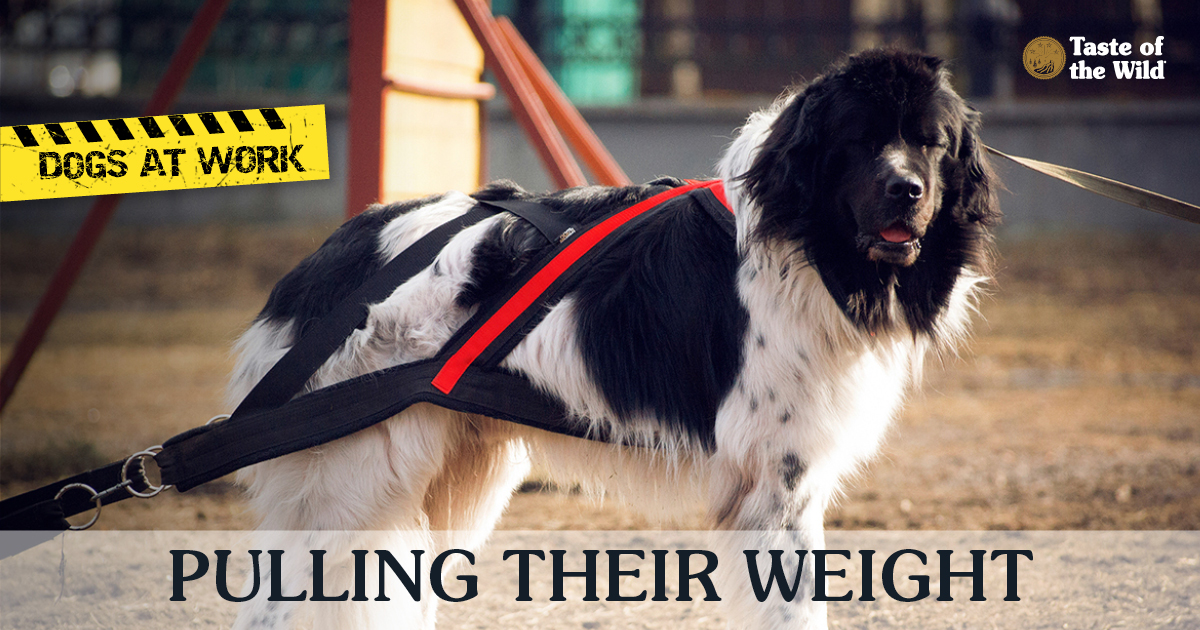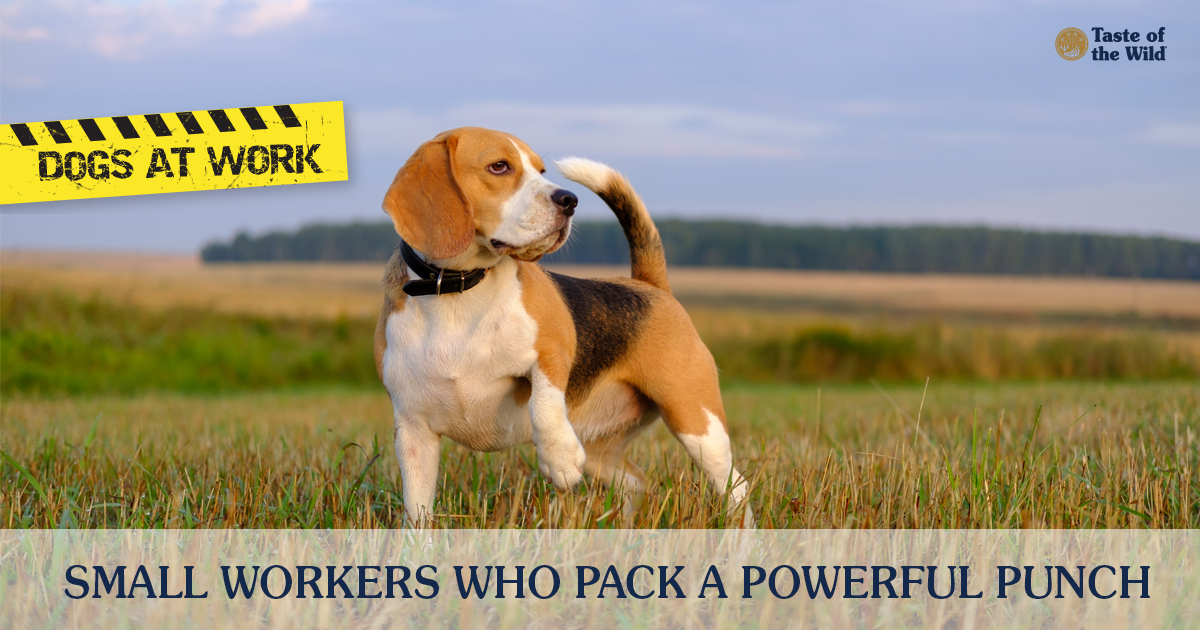Born to Pull: Carting and Drafting Dogs
Category: Working Dogs

Over the years, horses have been used to pull just about every type of wagon, from covered wagons to hay wagons and even beer wagons. But did you know that dogs also have a place in cart-pulling history?
Pulling their weight
Since about the 18th century, dogs often pitched in around the farm by pulling carts through the fields or bringing cheese and milk to town. They also hauled the day’s catch from the waterfront to the fish market or brought home mail and packages. Even arctic breeds were put to work pulling sleds over the tundra.
As you can imagine, chihuahuas were not among those dogs carrying lumber through lumber camps. Most of the work was shouldered by sturdier breeds from the working dog class, such as Bernese mountain dogs, Newfoundlands, Saint Bernards, Leonbergers, greater Swiss mountain dogs, bouviers des Flandres and Great Pyrenees.
Often referred to as the poor farmer’s horse, dogs were less expensive to purchase and maintain than horses. Because they were smaller in size, dogs could maneuver through tight alleys and crowded streets more easily than horses. Better yet, dogs could double as companions and guard dogs.
A change of heart
During the Victorian period in England, the Metropolitan Police Act of 1839 prohibited the use of dogs to “draw any Cart, Carriage, Truck or Barrow.” At a penalty of up to 40 shillings for a first offense, the law was intended to curb the use of carting dogs: it was suspected that dogs were carriers of rabies and some citizens were beginning to believe that it was cruel to put dogs to work this way.
Carting as a competitive sport
While the idea of cart-pulling dogs faded into retirement, some people felt that the dogs still had the instinct to pull and were, in fact, happy to have the job. Around the 1970s, interest in the sport of carting, or drafting, blossomed, leading to the first Saint Bernard carting competition in 1988 and a Bernese mountain dog event in 1991.
Today, almost any breed (including mixed-breed dogs) can participate in carting competitions or sports like urban mushing. Even so, that doesn’t mean every dog should compete. To begin with, you’ll want to make sure your dog really enjoys the sport. And a veterinarian should examine the dog and determine that there aren’t any physical or medical conditions that could be exacerbated by the activity. Finally, you’ll need to commit to proper training to help avoid any injuries to your dog.
While carting can be good exercise, most breeds shouldn’t compete before two years of age to make sure their bones and joints are fully developed. Dogs should also know basic obedience commands such as “stay” and “come.”
It’s best to work with an experienced trainer who can recommend the type of harness and cart that will not only be comfortable for your dog but won’t restrict limb movement. Once you gradually introduce your dog to the harness and cart, you can start working on more advanced tasks such as turns, circles, halts and figure-eights.
Remember, positive reinforcement in the form of treats or praise can help make this experience more rewarding for your dog and help strengthen the bond between you.
The information in this blog has been developed with our veterinarian and is designed to help educate pet parents. If you have questions or concerns about your pet’s health or nutrition, please talk with your veterinarian.




